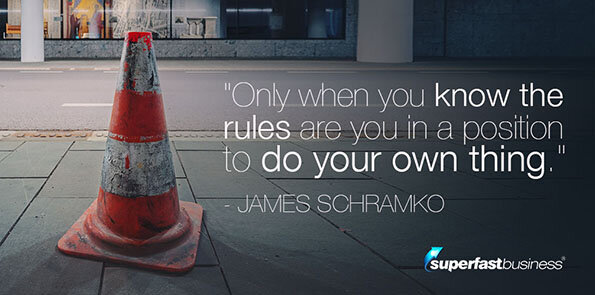Many people have questions about membership site platforms, and often they go unaddressed. James has run across whole groups of such people online.
In this episode, he and KLEQ’s John Lint have taken it upon themselves to provide answers. Listen as they draw on their expertise to give accurate intel on how to run a successful paid membership.
Podcast: Download (Duration: 37:44 — 34.7MB)
Get Notified Of Future Episodes Apple Podcasts | Spotify | Amazon Music | Android | Blubrry | Gaana | TuneIn | Deezer | Anghami | RSS | More
Episode highlights:
01:58 – Who will benefit hugely from this episode
03:14 – The neverending task of knowing what your members want
08:07 – What part of your membership is the biggest hit?
10:36 – What’s the number one growth method that’s worked for you?
16:59 – The scariest hurdles on the path to success
24:47 – The old “if you woke up with nothing…” question
25:56 – When you haven’t got followers, how do you get members?
30:32 – Which of the sites you’ve seen has the best numbers?
33:48 – Of all the membership site ideas you used, what’s the most important?
Run a successful membership business with help from James
James has discovered a couple of Facebook groups where people are asking endless questions about memberships. And because the queries are largely unanswered or supported by the groups’ founders, he and KLEQ‘s John Lint are taking on the task themselves…
Q: How do you continuously determine what your members want so you can adjust offerings to maintain engagement?
A: It’s all about talking to your customers, listening to what they’re saying, trying to engage as much as possible. You might do this through:
A social wall. This is a one-page private group that you can have inside your KLEQ members’ area. You can have as many of them as you want. It can be a private group inside all the different courses that you might have. Or you can just have one big group.
A forum. There, you can start conversations. And people can comment, like, share, engage with each other, start their own conversations, all of that.
Push notifications. These can help draw people out.
Weekly newsletters. These can inform you, by the number of clicks and comments, what members are interested in.
Consumption visibility. This is currently a feature in KLEQ.com John’s membership site software, whereby you can see who goes through your courses, how far they get through, the course completion rate. The data will tell you what your customers want.
Your helpdesk. Pay attention to what people ask for in support. This is a great way of knowing what your members need and want.
Q: What’s the most successful or popular part of your membership?
A: John has a few specific areas, which he calls the four pillars of membership:
1. Content. These are usually courses.
2. Community. People like to interact with people, and they can do this in forums or on social walls.
3. Coaching. This is being online and answering questions, doing presentations, streaming or doing live Q&A calls.
4. Private coaching. John calls this coaching in your pocket, where, especially if you have an app, people are messaging you one-on-one.
“People come for the solution to a problem, but they stick around for the community.”
People usually do a mix of the four elements. The most-used of these, however, says John, is the courses. People come for the solution to a problem, for the course. However, they then stick around for community. So if you’re starting out, those two are really important.
Q: What’s the one biggest way you’ve scaled your membership?
A: Scaling a membership, says John, is a combination of different strategies. You can have offers on a number of levels. A higher level offer might be a masterclass. And then you can have lower ticket items.
To John and some KLEQ users, the perfect scenario is a membership site, which is recurring income, but also having some high-ticket item to launch at different times during the year. You would also have lower-ticket items for the purpose of advertising.
The low-ticket items help you break even, recoup costs, and basically get free traffic for new customers. You can then also use them to offer the membership, or a higher ticket product.
“Whatever strategy you’re doing, do more of that, and focus on that.”
Once you have your membership site going, getting more people into the funnel is one of the things you need to focus on. And to do that, you need to expand your traffic sources, that is, do more of what works, whether it’s social media or other advertising or podcasting.
James scaled his membership not by getting significantly more customers over time, but by gradually raising his rates.
He started by offering the membership as a bonus for affiliate program buyers. Then he offered it as a follow-through after live workshops, giving 60 days free access. He also offered it with workshop recordings and individual products.
 Basically, the easiest way to scale a membership is off the back of something else. And the more expensive that something else is, the better members you’ll get, and the longer they’ll stay.
Basically, the easiest way to scale a membership is off the back of something else. And the more expensive that something else is, the better members you’ll get, and the longer they’ll stay.
James now sells his membership through multiple channels – his podcast, a book, individual products, a lower and a higher-ticket membership, a products page, and social media videos.
Q: What fears did you have to overcome to have the success you currently have?
A: John mentions both fear of success and of failure. Success, because of the potential change in his life and relationships, and failure, the possibility of losing face.
Some of his members, he says, struggle with creating content, being in front of the camera, or imposter syndrome. There is fear around their appearance, an accent, or their qualification to teach.
 Some people simply overanalyze things, and fail to take action. To these, John suggests, adopt a beginner’s mindset. Shut your mouth, put your head down, you know nothing, listen to that guy, implement, see what happens. If it fails, you now have data. It did not work, let’s analyze it. But if it doesn’t work, it doesn’t work. Now, you know.
Some people simply overanalyze things, and fail to take action. To these, John suggests, adopt a beginner’s mindset. Shut your mouth, put your head down, you know nothing, listen to that guy, implement, see what happens. If it fails, you now have data. It did not work, let’s analyze it. But if it doesn’t work, it doesn’t work. Now, you know.
 James boils the most common fear down to that of rejection. And he agrees about the beginner mindset. When you take a beginner mindset, you can move up at speed, and then only when you know the rules are you in a position to do your own thing. In the beginning, if you can see what’s working, stay close to that lane, but put your own individual spin on it. Later perhaps, the more well-known you get, the more established you are, the more you can move into your own path.
James boils the most common fear down to that of rejection. And he agrees about the beginner mindset. When you take a beginner mindset, you can move up at speed, and then only when you know the rules are you in a position to do your own thing. In the beginning, if you can see what’s working, stay close to that lane, but put your own individual spin on it. Later perhaps, the more well-known you get, the more established you are, the more you can move into your own path.
“The more well-known you get, the more established you are, the more you can move into your own path.”
Q: If you woke up tomorrow, and you’d lost everything and had no money, what would the next 30 days look like to recover?
A: James advocates prevention. Don’t be in a position where you’ve lost everything. He calls it Own the Racecourse. Build on your own platform. Have an email list. And have multiples, get paid in different currencies, have your product in multiple countries, have different products and services. Don’t be single-source dependent on anything, not income sources, not marketing channels, and not staff.
James himself has revenue share deals, 10 partners. If his membership vanished tomorrow, he has 10 other income sources to keep him afloat. In these days of deplatforming and what have you, it’s best to prevent such an actuality rather than have to deal with it.
“Decentralization is the word for the next five years.”
John agrees. Decentralization is the word for the next five years.
Q: What is the best way to attract members when you’re just starting out with your paid membership group, and you don’t have many followers on social media?
A: You need an audience. You need:
1. First to attract people to your stuff so they know you.
2. Then, you need to get them to join your email list, because that’s how you control your business, and it’s a great way to message them about relevant stuff that they want.
3. You then want to attract them to become a customer.
There are multiple ways of doing this. If you like to create content, create content. The kind of content depends on what you do best:
If you write, make articles.
If you’re a speaker, do podcasts. (If you don’t have a team, people like Charley Valher of Valher Media can help you.)
If you like videos, appear on YouTube, or collaborate with people on YouTube and other video platforms. Or make short videos on social media.
If you have a great product that people like, you might create an affiliate system.
If you have a budget and are okay with advertising, go on Google or other platforms.
Or if you like social media, consider Instagram, TikTok or Clubhouse.
Before anything else, remember, you need an offer that converts. Always look at how you can tune your offer to deliver more value, or to stand out. Trevor “Toecracker” Crook talked about this on an earlier episode.
Q: Of all the membership sites you’ve seen, what’s the most successful in regards to numbers?
A: For James, it’s Scott‘s bass guitar lessons, with around 25,000 members adding up to multiple millions in revenue.
At the end of the day, says John, they’ve got plenty of members making millions a year off memberships, and what they have in common is that they all help people solve their problems, whether it’s in health, fitness, or becoming a better bass player.
Q: What’s the most important thing that you did when you formed a membership site that you would advise new site builders to do more of?
 A: Create something that people want that is going to help them solve a specific problem. Then get traffic and build your email list…
A: Create something that people want that is going to help them solve a specific problem. Then get traffic and build your email list…
You can only have one thing, James reminds John. There’s no one thing, John responds. You need:
1. An offer that converts
2. Good funnels to build your email list
3. Good copy to sell the stuff.
James’s answer: he cared too much about his members. And John, he says, cares too, so much it hurts.
It’s important these days, they believe, and rare. Consider that the pair are answering questions for some other person’s Facebook group, because he couldn’t be bothered to answer them himself.
Expect a Part 2 to this episode, where James and John continue the Q&A.
Grow your business together with other motivated entrepreneurs, inside JamesSchramko membership.
Discover the all-in-one membership platform features of KLEQ.com
Liked the show? Enjoy all the episode by subscribing on iTunes









Leave a Reply